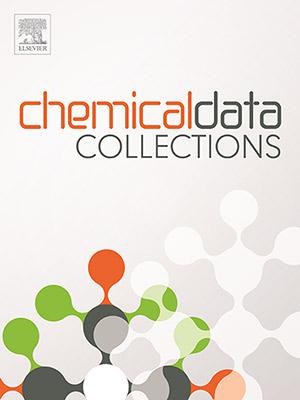High-resolution simulated metal hydride pressure-concentration-temperature isotherm data with software
IF 2.7
Q2 Chemistry
引用次数: 0
Abstract
This article reports high-resolution data of T1.15Fe and V75Ti10Zr7.5Ni7.5 hydride-forming metals specifically. However, the data for LaNi4.8Sn0.2, LaNi4.9Sn0.1, and La0.8Ce0.2Ni5 have also been shared in the same repository. The data was generated using a model published by Lototskyy in 2016 and a computational solving method published by Faurie & Premlall in 2025. From this, MATLAB scripts were generated and used to generate the high-density isotherm data for dissemination. This article aims to make the high-resolution isotherm data and associated MATLAB scripts for segment calculations available to the broader scientific community. Sharing the isotherm data eliminates the need for the regeneration of the isotherm data for the specific metal hydrides. Furthermore, it enables the possible development of models by providing a larger dataset to consider. Especially for the future generation of metal hydride neural network isotherm models, which require large datasets.

用软件模拟高分辨率金属氢化物压力-浓度-温度等温线数据
本文详细报道了T1.15Fe和V75Ti10Zr7.5Ni7.5氢化物形成金属的高分辨率数据。但是,LaNi4.8Sn0.2、LaNi4.9Sn0.1和La0.8Ce0.2Ni5的数据也在同一个存储库中共享。这些数据是使用lototsky于2016年发布的模型和Faurie &; Premlall于2025年发布的计算求解方法生成的。以此为基础,生成MATLAB脚本,并使用MATLAB脚本生成高密度等温线数据进行传播。本文旨在为更广泛的科学界提供高分辨率等温线数据和相关的用于分段计算的MATLAB脚本。共享等温线数据消除了对特定金属氢化物的等温线数据再生的需要。此外,它通过提供更大的数据集来考虑,从而使模型的开发成为可能。特别是对于未来一代的金属氢化物神经网络等温线模型,这需要大量的数据集。
本文章由计算机程序翻译,如有差异,请以英文原文为准。
求助全文
约1分钟内获得全文
求助全文
来源期刊

Chemical Data Collections
Chemistry-Chemistry (all)
CiteScore
6.10
自引率
0.00%
发文量
169
审稿时长
24 days
期刊介绍:
Chemical Data Collections (CDC) provides a publication outlet for the increasing need to make research material and data easy to share and re-use. Publication of research data with CDC will allow scientists to: -Make their data easy to find and access -Benefit from the fast publication process -Contribute to proper data citation and attribution -Publish their intermediate and null/negative results -Receive recognition for the work that does not fit traditional article format. The research data will be published as ''data articles'' that support fast and easy submission and quick peer-review processes. Data articles introduced by CDC are short self-contained publications about research materials and data. They must provide the scientific context of the described work and contain the following elements: a title, list of authors (plus affiliations), abstract, keywords, graphical abstract, metadata table, main text and at least three references. The journal welcomes submissions focusing on (but not limited to) the following categories of research output: spectral data, syntheses, crystallographic data, computational simulations, molecular dynamics and models, physicochemical data, etc.
 求助内容:
求助内容: 应助结果提醒方式:
应助结果提醒方式:


